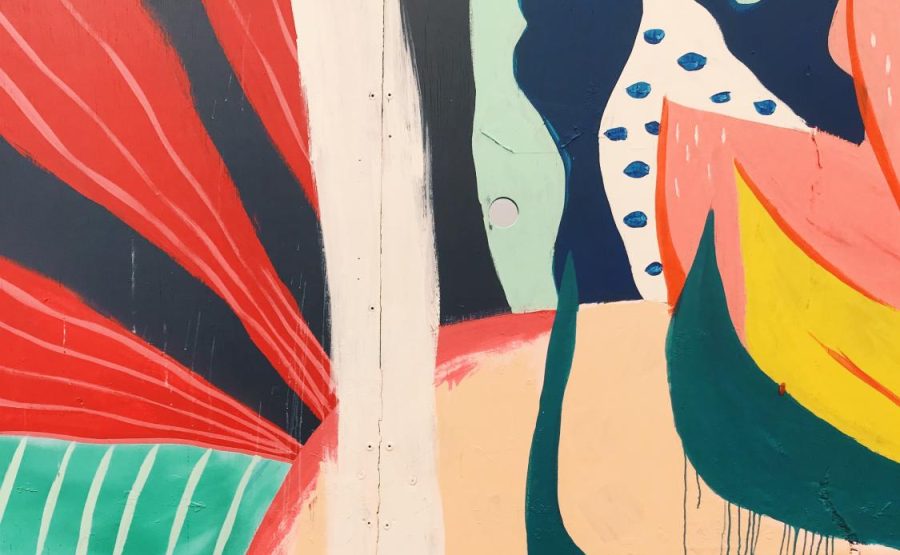My Love of the Risograph
April 20, 2022
I’m in love with a Japanese-manufactured, soy-based, initially cheap turned valuable printer called the Risograph. A rare machine these days, the Risograph is a unique printer that can only print one color at a time. Although a seemingly inconvenient factor, it’s the Risograph’s most cherished quality—by artists and office workers alike. It’s undeniably my favorite printer, and it’s one of my top choices for printmaking—even though I’ve never actually had the chance to use one.
Norboru Hayama created the Riso Kagaku Corporation (RISO) and is the inventor of the Risograph in 1946. The Japanese word “riso” means ideal—something that inventor Hayama deeply valued.
According to the RISO website, he started the corporation in 1946, built on the idea that “we must always pursue our ideals to ensure the future”. In 1954, Japan was suffering from economic depression and emulsion ink, being the most popular printing ink at the time, was difficult and expensive to get a hold of. To remedy this issue Hayama created an alternative soy-based ink, named it “Riso” and sold it at a much more affordable price.
In 1980, RISO released the RISOGRAPH AP7200 and the RISOGRAPH FX7200, the “world’s first stencil printer with fully automatic inking.” It was an incredibly low-cost printer, thanks to the cheap price of the soy-based ink Hayama had developed 30 years prior. Although the rate of how many pages a Risograph from the 80s could print out, a Risograph today can print 50 to 10,000 copies within minutes.
While successful in Japan, the Risograph wasn’t very accessible to people outside of the small country until the late 80s/90s. Since then, the Risograph has experienced a resurgence in popularity not for office buildings but for printmaking artists around the world. While the printer was created with quantity over quality in mind to give businesses the most efficient printer—to me and to many artists, it’s the printer’s “cheap” print quality that makes it so valuable.
To give a quick background crash course, the Risograph prints images using stencils. A “master image” is either digitally sent to the printer or placed on the scanner bead and then burned onto the “master roll” inside the printer, creating a stencil. The stencil then is wrapped around the ink drum (RISO ink is sold in drums that look like long cylinders) and when paper is fed into the printer, the drum rotates, pushing ink through the stencil and onto the paper.
The material the stencil is burned onto gives it a texture that one might categorize as poor quality. It looks a lot like the halftones you might find in comics, with small dots or hatches either condensed in one area to give the illusion of a solid color or spread out to make colors lighter. It doesn’t look anything like the solid colors that come out of a photo printer—to someone expecting that, stuff printed from a Risograph probably looks spotty and inconsistent. But it’s exactly that halftone texture (and that inconsistency, but more on that later) that allows artists to play with opacity and blending of their colors.
RISO ink is known for its vibrancy—they don’t sell any dull colors outside of black and gray. Combined with the halftone texture above, printing one color at a time enables artists to create different colors by layering available ink colors at different opacities. Think about mixing red and yellow paint to create orange—with a Risograph that might look something more like printing a red layer at 50% opacity and then printing a yellow layer on top at 80%. The not quite perfect registration, or the inconsistent lining up of the halftone dots from the stencil, gives Risograph prints such a special appearance—making not two Risograph prints alike.
Unfortunately, because of the rareness of the printer today, getting your hands on a Risograph is tricky and expensive. But that doesn’t prevent the growing number of artists hooked on the machine. The printer is made for experimentation and happy accidents. You don’t know what blended colors are going to look like until they emerge from the printer, or what your artwork will look like by the end of all your layers. It’s a manufactured kind of magic—there’s something so wonderful about the collaboration between a machine and an artist to create something that’s one of a kind.
Photo courtesy of UNSPLASH.COM

